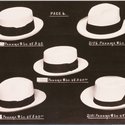By
David Schonauer Friday August 2, 2024
In a "fresh broadside against one of the world's most popular technology companies," noted Associated Press this week, the Department of Justice is alleging that TikTok is sending information on the
social views of Americans to engineers in China. Government lawyers say TikTok employees used an internal web-suite system called Lark to send sensitive data about US users to its Beijing-based
parent company ByteDance. … Read the full Story >>
WIRED Thursday August 1, 2024
Film is like the indestructible black knight in Monty Python and The Holy Grail: It won't die. So notes Wired, which recently offered analog photography novices a guide to getting started in the old technology. Thanks to film’s increased popularity over the past few years, it’s getting easier to hoot, develop, and print film. Start by picking a camera—for instance, a Canon AE-1 (which you might get used for $150). You’ll also need film. Best overall? Fujifilm Velvia 50, if your shooting landsapes, declares the magazine.
Read the full Story >>
Surfer Thursday August 1, 2024
Women worldwide are making their mark in all areas of surf photography, notes Surfer magazine, which spotlights 12 female surf photographers you should be following to see “[s]ome of the best barrels at Pipe and the most monstrous days out at places like Mavericks or Waimea Bay.” Among them: Oahu photographer Amber Mozo, whose first photographic inspiration was the work of her father, surf photographer Jon Mozo. “The skills I’ve needed for my photography have been to learn the ocean,” she says.
Read the full Story >>
PetaPixel Thursday August 1, 2024
According to new research shared by the Royal Astronomical Society, AI-generated fakes can be analyzed the same way astronomers study galaxies. “University of Hull MSc student Adejumoke Owolabi concludes that it is all about the reflection in a person’s eyes. If the reflections match, the image is likely to be that of a real human. If they don’t, they’re probably deepfakes,” notes PetaPixel. Researchers analyzed reflections of light on the eyeballs of people in real and AI-generated images. They then borrowed a method typically used in astronomy to quantify the reflections and checked for consistency between left and right eyeball reflections.
Read the full Story >>




